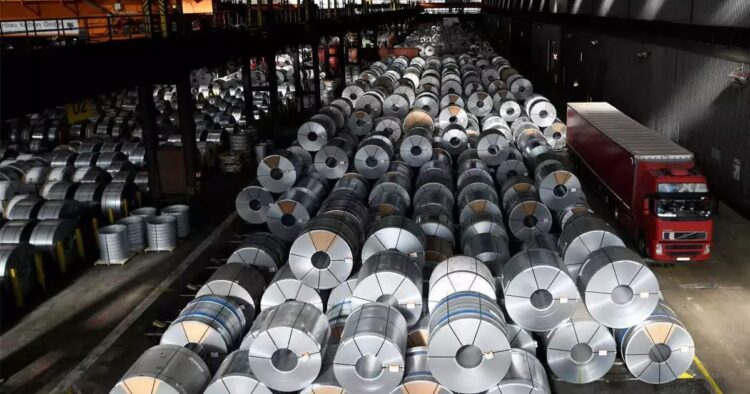Bharat’s steel industry is sounding the alarm as the country transitions into a net importer of steel for the fiscal year 2023-24. This development has raised concerns within the industry, particularly regarding Bharat’s aspirations for self-reliance, or “Atmanirbhar.” According to the steel ministry’s Joint Plant Committee, imports of finished steel surged by 38%, reaching 8.319 million tonnes compared to the previous fiscal year’s 6.022 million tonnes.
Alok Sahay, Secretary General of the Indian Steel Association (ISA), emphasized the threat posed by a surge in predatory imports from countries like China to Bharat’s goal of achieving self-reliance in steel production. He stressed the importance of taking urgent trade remedial actions to curb the influx of inbound shipments. Sahay called for the removal of the lesser duty rule, which currently benefits importers, to prevent other steel-surplus countries from exploiting Bharat’s growth momentum for their own gains.
Ranjan Dhar, Chief Marketing Officer of ArcelorMittal Nippon Steel, echoed Sahay’s concerns, highlighting the threat posed by predatory imports to Bharat’s steel industry. He emphasized the need to restrict steel imports to safeguard investments and ensure robust GDP growth.
Anubhav Kathuria, Director of Synergy Steels, emphasized the rise in imports of stainless steel, particularly from countries like China and Indonesia. He stressed the importance of enhancing the cost competitiveness of products and recommended reducing import duties on key raw materials such as ferro nickel, molybdenum concentrate, and ferro molybdenum.
Vinod Kumar, President of the India SME Forum, highlighted the industry’s ongoing efforts to urge the government to review free trade agreements with several countries to stem the tide of imports. Kumar emphasized the need for proactive measures to protect domestic steel producers and support the country’s ambitious goals outlined in the National Steel Policy, which aims to increase annual steel production capacity to 300 million tonnes by 2030 to meet domestic demand.
In conclusion, the Bharatiya steel industry faces significant challenges as the country grapples with a surge in steel imports, particularly from countries like China. Urgent action is needed to address the threat posed by predatory imports and ensure the industry’s competitiveness and long-term sustainability.

















Comments